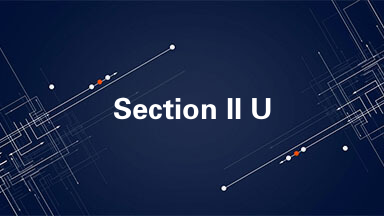
Section II Use of English
Read the following text. Choose the best word (s) for each numbered blank and mark [A], [B], [C] or [D] on ANSWER SHEET. (20 points)
Health implies more than physical fitness. It also implies mental and emotional well-being. An angry, frustrated, emotionally 21 person in good physical condition is not 22 healthy. Mental health, therefore, has much to do 23 how a person copes with the world as s/he exists. Many of the factors that 24 physical health also affect mental and emotional well-being.
Having a good self-image means that people have positive 25 pictures and good, positive feelings about themselves, about what they are capable 26 , and about the roles they play. People with good self-images like themselves, and they are 27 like others. Having a good self-image is based 28 a realistic, as well as positive, or optimistic 29 of one’s own worth and value and capabilities.
Stress is an unavoidable, necessary, and potentially healthful 30 of our society. People of all ages 31 stress. Children begin to 32 stress during prenatal development and during childbirth. Examples of stress-inducing 33 in the life of a young person are death of a pet, pressure to 34 academically, the divorce of parents, or joining a new youth group. The different ways in which individuals 35 to stress may bring healthful or unhealthy results. One person experiencing a great deal of stress may function exceptionally well 36 another may be unable to function at all. If stressful situations are continually encountered, the individual’s physical, social, and mental health are eventually affected.
Satisfying social relations are vital to 37 mental and emotional health. It is believed that in order to 38 , develop, and maintain effective and fulfilling social relationships people must 39 the ability to know and trust each other, understand each other, influence, and help each other. They must also be capable of 40 conflicts in a constructive way.
21. [A] unstable [B] unsure [C] imprecise [D] impractical
22. [A] normally [B] generally [C] virtually [D] necessarily
23. [A] on [B] at [C] to [D] with
24. [A] signify [B] influence [C] predict [D] mark
25. [A] intellectual [B] sensual [C] spiritual [D] mental
26. [A] to be doing [B] with doing [C] to do [D] of doing
27. [A] able better to [B] able to better [C] better to able [D] better able to
28. [A] on [B] from [C] at [D] about
29. [A] assessment [B] decision [C] determination [D] assistance
30. [A] ideality [B] realization [C] realism [D] reality
31. [A] occur [B] engage [C] confront [D] encounter
32. [A] tolerate [B] sustain [C] experience [D] undertake
33. [A] evidence [B] accidents [C] adventures [D] events
34. [A] acquire [B] achieve [C] obtain [D] fulfill
35. [A] respond [B] return [C] retort [D] reply
36. [A] why [B] when [C] while [D] where
37. [A] sound [B] all-round [C] entire [D] whole
38. [A] illuminate [B] enunciate [C] enumerate [D] initiate
39. [A] access [B] assess [C] process [D] possess
40. [A] resolving [B] saluting [C] dissolving [D] solving
Section II Use of English

